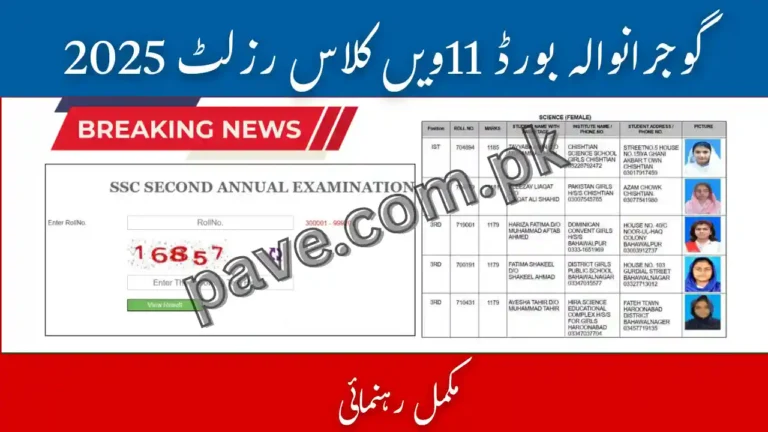Breaking News: WAPDA Introduces New Criteria for Installing Multiple Electricity Meters in 2025
The Water and Power Development Authority (WAPDA) has announced new criteria for the installation of multiple electricity meters at a single residential property. Set to take effect in 2025, this decision aims to ensure fairness and efficiency in the distribution of electricity, helping to prevent misuse of subsidized rates and improving the overall sustainability of the electricity system. WAPDA Introduces New Criteria for Installing Multiple Electricity Meters in 2025, check complete details below.
WAPDA has made it clear that the new rules will apply to properties where more than one family is living independently, which will allow them to install additional meters for separate billing. This move is part of a broader effort to improve transparency in electricity consumption and ensure that resources are used fairly across the population.
Why is This Change Necessary?
The primary reason behind this new policy is the growing concern over the misuse of subsidized electricity. In many urban areas, some property owners have been installing multiple meters to take advantage of cheaper rates offered for residential electricity. However, in some cases, a single meter was being shared by multiple families, leading to unfair distribution of electricity costs.
In addition, the old system lacked proper regulation and monitoring, leading to fraudulent activities where consumers could manipulate the system to avoid paying full electricity bills. This new policy from WAPDA seeks to address these issues by ensuring that only eligible households receive the benefits of subsidized electricity, and that the consumption of each family is measured accurately.
Read Also: Bank AL Habib Roshan Apni Car Scheme 2025
What Are the New Criteria for Installing Multiple Meters?
WAPDA’s new criteria are designed to clearly define who qualifies for multiple meters and how the installation process should be carried out. Here are the key components of the new regulations:
1. Separate Living Units
To qualify for multiple electricity meters, the residential property must have separate living units. These units must meet specific requirements:
- Separate Entrance: Each unit must have its own entrance to the property. This ensures that the units are independently accessed.
- Independent Electrical Circuit: Each unit must have a separate electrical circuit, ensuring that the electricity consumption of one unit does not overlap with another. This is critical for accurate billing.
- Separate Kitchen: The units should have their own kitchen facilities, proving that each unit functions as an independent household. This helps prevent property owners from taking advantage of the system by claiming multiple families in the same unit.
2. Affidavit Declaration
The new policy requires residents who want to install additional meters to submit an affidavit declaring that the property has separate families living in each unit. The affidavit must be submitted on a Rs. 50 stamp paper, and it must specify that the families are living independently and using their own kitchen facilities and electrical circuits.
This declaration helps WAPDA confirm the legitimacy of the request before granting permission for the installation of additional meters.
3. Verification by Authorities
To ensure that the application is genuine, WAPDA has mandated that the building layout of the property be verified by local authorities. In cities like Lahore, the Lahore Development Authority (LDA) will review the property’s structure to confirm that it complies with the new regulations. Only properties that meet the physical requirements for separate living units will be approved for additional meters.
Read Also: CM Maryam Nawaz Launches Biggest Livestock Relief
4. Exceptions for Low Consumption
For properties that require less than 5kW of power, WAPDA will provide a three-phase meter instead of allowing multiple meters. This is designed to simplify the process for smaller households or those with lower energy demands, reducing the need for additional meters while still maintaining fairness in billing.
5. Penalties for Non-Compliance
The new criteria are designed to ensure that the system is used fairly. If a property is found to have multiple meters installed without following the criteria, WAPDA can impose penalties. These could include revoking unauthorized meters or disqualifying the property from receiving subsidized electricity rates. These strict measures will help maintain the integrity of the system and prevent misuse.
What Are the Benefits of This New System?
1. Fairness in Billing
By introducing clear guidelines for the installation of multiple meters, the new policy will help ensure that each family pays for the electricity it consumes. This prevents situations where one family may be subsidizing the electricity use of others by sharing a single meter.
The system will help create a transparent and equitable approach to electricity billing, where each household is responsible for paying its fair share.
2. Reducing Fraud and Misuse
The introduction of affidavits and property verification ensures that only legitimate multi-family homes can install multiple meters. This helps prevent fraudulent practices, where property owners may otherwise exploit the system to lower their electricity bills. The verification process will also reduce instances of false declarations about household compositions.
3. Encouraging Energy Efficiency
With separate meters for each family, the system will encourage households to become more conscious of their electricity consumption. When people see how much energy they are using, they are more likely to adopt energy-saving practices, such as turning off lights when not in use or using energy-efficient appliances.
4. Improving Infrastructure and Maintenance
WAPDA’s new rules will likely lead to a better-maintained electricity grid. With clearer regulations in place, the electricity distribution system will be more efficient, and potential issues, such as overloading or faulty connections, will be easier to manage and prevent.
5. Support for Sustainable Development Goals
This policy aligns with Pakistan’s commitment to sustainability. By ensuring that energy use is measured more accurately and fairly, it contributes to the country’s sustainable development goals and helps to reduce energy wastage, ultimately supporting a greener future.
Read Also: CM Maryam Nawaz Launches Biggest Livestock Relief
Challenges and Considerations
While the new policy promises many benefits, there are some challenges to consider:
1. Implementation Costs
The cost of installing new meters and upgrading infrastructure to support the increased number of meters could be significant. Property owners may have to pay for installation and maintenance costs, which could be a financial burden for some.
2. Public Awareness
The success of the new policy will depend on how well it is communicated to the public. Many residents may not fully understand the new requirements or the need for separate living units. Public awareness campaigns will be essential to ensure that property owners are informed and can comply with the rules.
3. Slow Adaptation
Some areas of the country may take time to fully adapt to the new system, especially in rural areas where electricity infrastructure may be lacking. This could lead to a delay in the implementation of the rules in those regions.
WAPDA Introduces New Criteria for Installing Multiple Electricity Meters in 2025 Conclusion:
WAPDA’s new policy for installing multiple electricity meters represents a significant step forward in creating a fairer, more efficient, and sustainable electricity distribution system. By ensuring that only eligible properties can install additional meters, the policy aims to eliminate fraudulent practices and promote energy conservation.
As these changes are rolled out in 2025, WAPDA will continue to monitor the effectiveness of the new regulations, ensuring that they achieve their goal of fair billing and improved electricity management. For residents, this means clearer, more accurate bills and a more equitable system for everyone.







